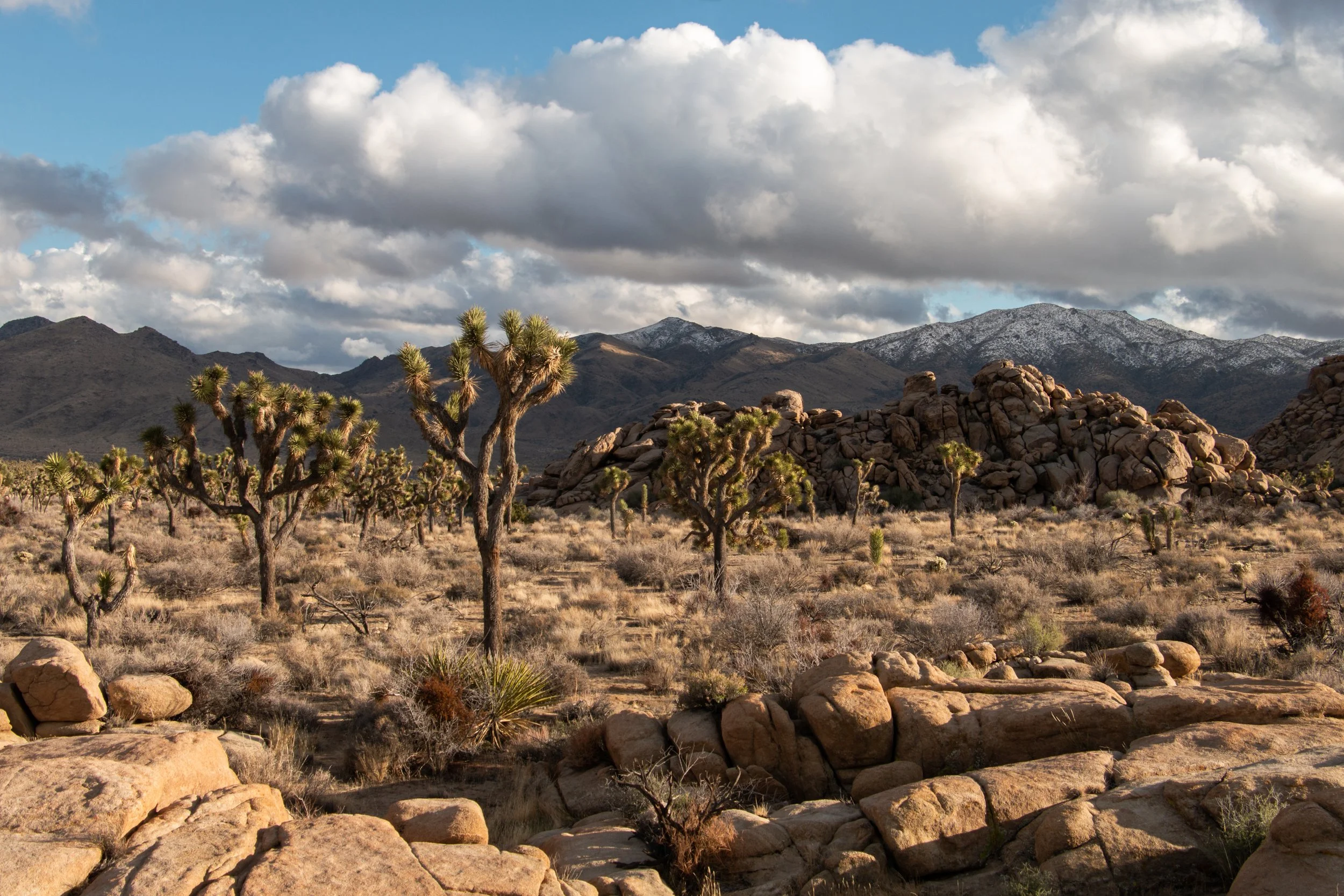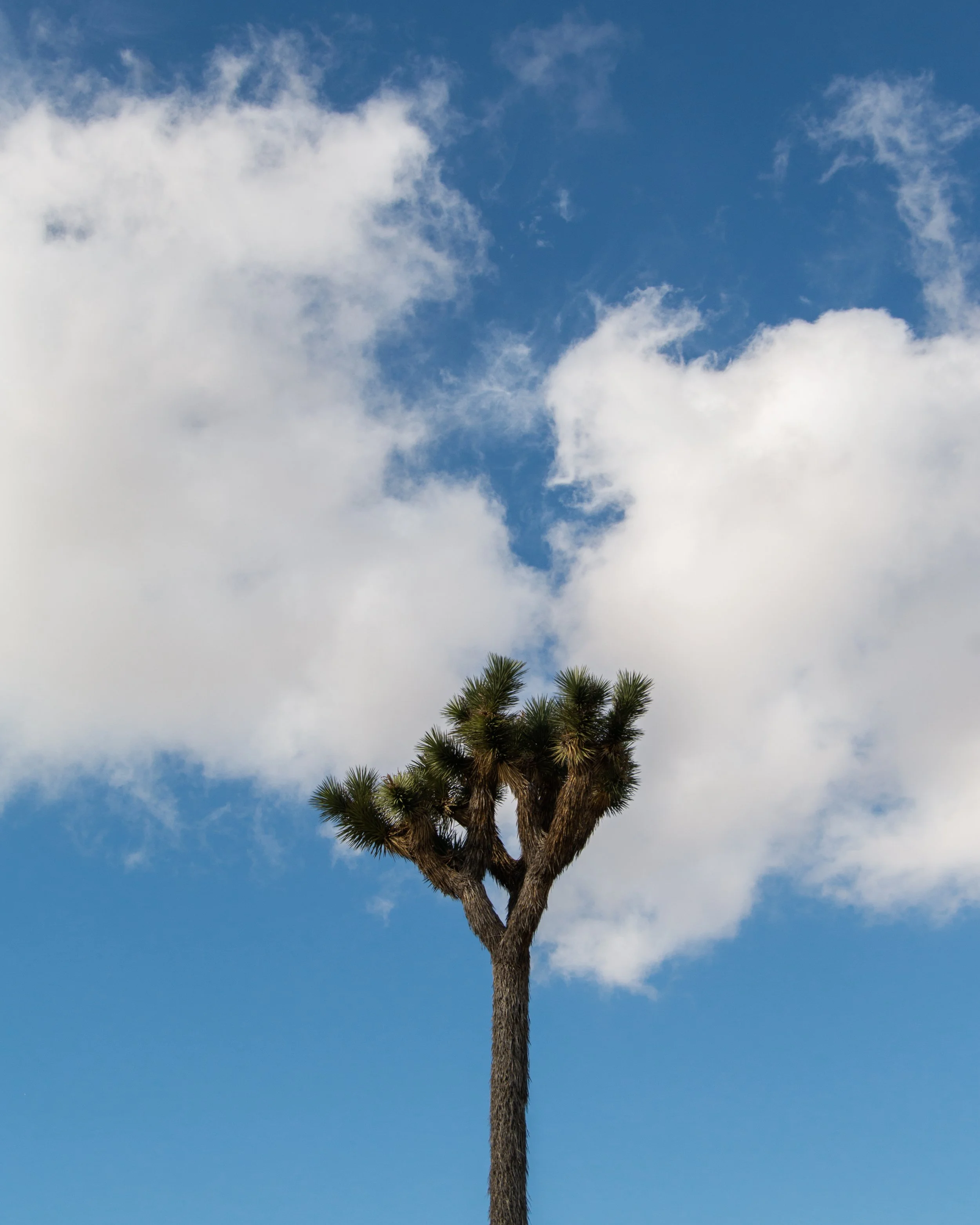Joshua Trees
Photography © Paul Martinez
What is a Joshua Tree?
More than just a tree, the Joshua tree (Yucca brevifolia) is a symbol of the Mojave Desert—uniquely shaped, slow-growing, and seemingly pulled from the imagination of a surrealist painter. Though commonly called a tree, it’s actually a member of the agave family.
Its spiky leaves, twisted branches, and towering presence define the character of the Mojave landscape. Found primarily in the southwestern United States, the Joshua tree thrives in the high desert’s dry, rugged conditions.
How Joshua Trees Grow
Joshua trees are notoriously slow growers, often taking several decades to reach just a few feet in height. Their branching begins only after they flower, which may not occur every year and depends heavily on seasonal rainfall and the presence of pollinators.
These trees can live for hundreds of years. Their limbs are shaped by harsh winds, extended drought, and the relentless passage of time—creating forms that are as varied as they are iconic.
A Keystone of the Mojave Ecosystem
Despite their sparse appearance, Joshua trees play a vital role in the desert ecosystem. They offer shelter to a wide variety of species:
Birds, like Scott’s orioles and ladder-backed woodpeckers, nest in their branches.
Insects, including the rare yucca moth, pollinate their flowers in an intricate mutual relationship.
Lizards, small mammals, and countless invertebrates take refuge in the shade of their trunk and undergrowth.
When the trees bloom in spring, their creamy white flowers attract a flurry of life—marking a fleeting but spectacular moment in the desert’s seasonal rhythm.
What’s With the Name?
According to legend, Mormon settlers gave the Joshua tree its biblical name because the tree’s outstretched branches reminded them of the prophet Joshua, raising his arms to guide them westward. But beyond folklore, the Joshua tree has come to represent something deeper: resilience, adaptation, and the raw beauty of survival.
Threats to Joshua Trees
Today, Joshua trees are facing mounting threats:
Climate Impacts: Records indicate that rising temperatures and reduced rainfall are shrinking their viable habitat.
Wildfires: Fueled by invasive grasses, wildfires now pose a growing danger to these slow-recovering plants.
Urban Development: Expanding cities and roads fragment the land they’ve inhabited for centuries.
Without intervention, the range of Joshua trees could shrink dramatically in the coming decades. Conservation groups, scientists, and national parks are working to ensure their protection, but long-term success will rely on a shared commitment to stewardship.
Why They Matter
To walk among Joshua trees is to enter a landscape that feels ancient, alien, and sacred all at once. Their resilience offers a quiet lesson—about life in extremes, the elegance of adaptation, and the importance of preserving the places that shape our understanding of nature.
As climate pressures increase, Joshua trees stand as guardians of the Mojave—reminding us of the delicate balance between survival and change, and of our role in protecting what endures.


